2025 Future 5 Awardees
Each year, AOC showcases five young professionals as the year's Future 5, recognizing those who actively innovate and strive for excellence as they build their careers in in electromagnetic warfare, electromagnetic spectrum operation, and information operations.
Please join us in celebrating this year’s Future 5!
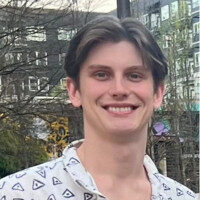
Zachary Cushenberry
Southwest Research Institute
Career Goal
In my career as an electromagnetic warfare engineer, I've focused on technology development, specifically as a test engineer. I have noticed a deficiency in DOD test technology and methodology, particularly in the utilization of modern tools, such as AI. I aim to leverage these same modern tools to identify performance gaps, validate new capabilities, and challenge conventional testing methods that may be insufficient in today's dynamic environment. My primary career goal as an EW engineer is to lead the development and execution of cutting-edge test technologies, ensuring that US EW systems are effective and resilient in the face of evolving threats. I want to be a change agent – someone who questions outdated processes and drives innovative, mission-relevant test approaches. Ultimately, I strive to lead the advancement of EW test research and technology development, shaping next-generation test environments that keep pace with emerging foreign threats while expanding the potential for US innovation.
Career Achievement
To date, my most significant career achievement has been representing the Southwest Research Institute’s Ravager project during a major hardware-in-the-loop (HWIL) test event at a large DOD EW facility. Although I cannot disclose information about the project itself, the test event marked a critical milestone for the program and allowed me to showcase the skills I learned thus far in my career. What made this a standout moment in my career wasn’t just the successful outcome but the level of responsibility I carried and the trust placed in me to lead. It confirmed my passion for guiding EW systems through complex test environments and reinforced my love for EW.
AOC Dixie Crow Chapter
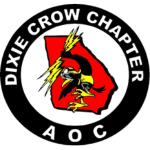
Education
Bachelor of Science in Computer Engineering, University of Georgia

Luis Garrido
L3Harris Technologies
Career Goal
My ultimate career goal is to accelerate the development and deployment of critical technologies that help the US military maintain national security and support our allies. Achieving this requires sustained investment in basic research and innovation across the aerospace and defense industries. Government and industry must continue to collaborate with universities and small businesses to leverage emerging technologies, such as AI for communications and electromagnetic warfare, advanced materials, RF component manufacturing, integrated circuits, and next-generation signal processing. Every year, tens of thousands of research papers are published and thousands of startups strive to bring innovative ideas to market. Many of these innovations come from small companies with breakthrough solutions that risk being overlooked in favor of larger defense contractors. I see it as my responsibility to bridge that gap – connecting cutting-edge technologies with government mission needs. By attending technical conferences, connecting with researchers and innovative companies, and engaging with the government to understand their mission needs, I aim to create opportunities and bridge specific solutions or critical technologies to help the government resolve these needs. By building better processes for discovering innovation and improving the speed at which innovative ideas can be deployed by the government, we will save time, save money, ensure our national security, and protect the lives of those who defend that security every day.
Career Achievement
My biggest career achievement to date has been participating in the VALIANT SHIELD 2024 exercise in Hawaii, where my team demonstrated a new product focused on rapid EW mission data file reprogramming with distributed low-cost, cloud-connected EW payloads. The road to Hawaii began at Clifton, New Jersey, in January 2023 with a demonstration I led for then commander of the 350th Spectrum Warfare Wing, Col. Josh "Mule" Koslov, and his team of expert pilots and engineers. He commended our work focused on deploying cognitive EW algorithms to the cloud and awarded me my first Challenge Coin. This coin represents much more than a token of appreciation. It demonstrates the impact that ideas and technology have on our world. It also reminds us we must do our best to be ready as a nation and support our military in their mission to maintain freedom and liberty for America and her allies. We received feedback post-demo from our stakeholders and further developing our technology over the next 1.5 years. Fast forward to June 2024, our team is on-station at Pearl Harbor-Hickam working in 90 degree weather deploying small form factor payloads onto unmanned surface vessels networked to additional platforms in San Diego and New Jersey collecting and processing real-time data on the cloud. Now, one year later in July 2025, my team and I are headed to Australia to support TALISMAN SABRE 2025 and continue pushing the envelope while developing, demonstrating, and delivering technology to the people who need it.
AOC Garden State Chapter

Education
Bachelor of Science in Electrical and Computer Engineering, Rutgers University (2018)
Master of Science in Electrical Engineering, Stevens Institute of Technology (2021)
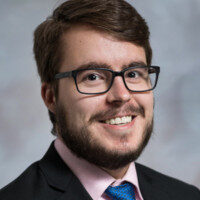
Brandt Lomen
MITRE Corporation
Career Goal
Over the past seven years working in electromagnetic warfare, I have witnessed a significant shift in operational priorities. Current conflicts demonstrate that imperfect EW is often more valuable than none at all. This realization inspired me to invent a capability that delivers effective yet cost-efficient electronic attack at a price point comparable to a modern cellphone. While industry initially dismissed the idea due to low profit margins, military operators recognized its operational value and supported its potential impact. My ultimate career goal is to bridge the gap between modern operational EW needs and the industry status quo. If industry can embrace innovative solutions that prioritize operational effectiveness over traditional profit-driven methods, our nation’s electromagnetic spectrum operations will grow stronger. To advance this vision, I recently accepted a position in Honolulu, Hawaii, where I support joint warfighter efforts. In this role, I aim to advocate for the idea that EW does not need to be perfect – it simply needs to be present and adaptable to the mission. By challenging conventional approaches and emphasizing quantity over perfection in EW capabilities, I hope to drive meaningful change in how government and industry collaborate on EW solutions. Through creative problem-solving, effective communication, and leadership, I aspire to contribute to a more resilient and responsive national defense strategy.
Career Achievement
In August 2023, I invented a device of interest, a groundbreaking system unlike any existing electromagnetic warfare technology. Its uniqueness initially sparked internal skepticism within my organization, as it challenged conventional thinking and addressed a need that had not yet been recognized. Despite this resistance, I persisted, conducting extensive research to validate the concept and secure internal funding. This allowed me to assemble a multidisciplinary team of radar, electrical, and mechanical engineers to rapidly prototype the device within months. Throughout the development process, I actively communicated the technology’s significance and the broader need it addressed to stakeholders across the military. My presentations at back-to-back Collaborative EW Symposiums provided opportunities to advocate for this paradigm shift, even in the face of significant pushback. I refused to be deterred by those who dismissed the idea simply because it defied traditional approaches. By 2025, my efforts culminated in a pivotal moment at the Collaborative EW Symposium, where an allied air commodore publicly validated my work. He not only acknowledged the accuracy of my analysis but emphasized the critical relevance of this work. This recognition affirmed the impact of my invention and my ability to challenge the status quo, lead a team toward a common goal, and effectively communicate innovative ideas. The development and validation of the device remain my greatest career achievement to date.
AOC Granite State Chapter
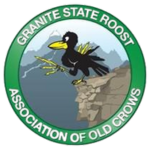
Education
Bachelor of Science in Electrical Engineering, University of Alaska Fairbanks
Master of Science in Electrical Engineering, Worcester Polytechnic Institute
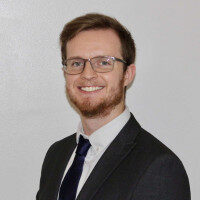
Kane Louderback
Information Systems Laboratories
Career Goal
My ultimate career goal is to make increasingly meaningful contributions to the EMSO and EW communities by improving accuracy and reducing error in our systems, algorithms, and simulations. In this field even minor errors, whether that be in the software, hardware, human-in-the-loop, or training data behind artificially intelligent algorithms and systems can lead to mission failure or put lives at risk. Our warfighters depend on the precision of our tools, and I believe it is our responsibility to provide not just abundant data/training, but the right data/training materials for the mission scenario to ensure realistic and reliable training and preparation for operational success. Throughout my career, I have focused on delivering high-fidelity modeling and simulation capabilities to support this mission. From enhancing algorithms for pulse de-interleaving using novel approaches, to leading agile teams delivering SAR solutions, to supporting open-air range testing, each step has further solidified my commitment to excellence in EMS operations. Looking ahead, my aspiration is to continuously grow into the best version of myself both as a leader and technical contributor by surrounding myself with strong mentors and collaborative teams, pursuing higher education, and building a diverse range of experiences across technical domains and mission contexts. By doing so, I aim to drive innovation that ensures our warfighters are equipped, trained, and supported by the most accurate and advanced EW/EMS systems available.
Career Achievement
One of my proudest career achievements to date has been serving as the project manager to develop a neural network algorithm under the Advanced Common Electromagnetic Development Environment (ACEDE) program for AFLCMC at Wright-Patterson Air Force Base. The algorithm is designed for electronic support (ES) applications, specifically focused on pulse sorting (or de-interleaving) using a novel approach of using the multipath clutter signatures to distinguish between pulses. Pulse sorting is a challenging problem that is critical to situational awareness in complex RF environments. I led a team of engineers through technical planning, schedule management, and resource allocation, while also facilitating stakeholder communication and coordination to ensure project success. I am incredibly proud to say that because of the project’s technical success, we were positioned well for continued work and follow-on opportunities. I now serve as the project manager for this next phase, which focuses on enhancing the algorithm’s capability and performance. This project sparked new insights that led me to develop and deliver a technical presentation on Multipath Signal Analysis For EMS Superiority, which I was able to present at multiple professional events. The ACEDE team received the Team of the Year award in 2024 by the AOC Kittyhawk Chapter for contributions to the fielding of electronic warfare technologies. I was also personally honored with the Young Professional Award from the Kittyhawk Chapter at the same event – an achievement I believe was strongly tied to the experience and leadership growth I gained through this project.
AOC Kittyhawk Chapter

Education
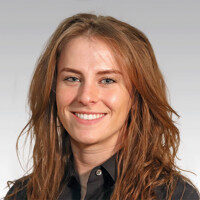
Samantha Schattin
L3Harris Technologies
Career Goal
The defense industry is evolving rapidly to meet the challenges of a faster, more dynamic threat landscape. My goal is to equip the warfighter with cutting-edge solutions that maximize mission success and enhance safety. Emerging technologies such as drones, AI, and machine learning are transforming the modern battlefield, introducing new dimensions and complexities. Rather than reacting to changes in the environment, I strive to anticipate them, integrating innovative capabilities early in development to ensure we maintain a strategic advantage. I want to lead efforts that use these evolving technologies proactively and creatively to solve tomorrow’s problems today. While I may not be an expert in AI or ML, I work with incredibly talented people who are. My strength lies in uniting cross-functional teams, providing clear strategic direction, and translating high-level goals into actionable objectives. I believe the best results come from leveraging diverse skill sets and empowering team members to own their contributions. I strive to create clarity, offer resources, and maintain momentum toward shared outcomes. Leadership also means investing in those who come next. I make it a priority to mentor new engineers, encouraging questions, explaining context, and helping them grow into confident problem solvers. My goal is to model curiosity, accountability, and perseverance, so they not only contribute to current efforts but are also prepared to lead future ones. Developing technical talent while fostering a collaborative and supportive culture is key to sustaining innovation in national defense.
Career Achievement
To date, my greatest career achievement has been leading the successful development and deployment of an advanced electromagnetic warfare capability that brought together my core professional goals: technical innovation, cross-functional leadership, and positive mission-driven impact. I led a team of approximately 10 engineers across software, systems, and firmware disciplines to deliver a cutting-edge solution capable of efficiently acquiring, tracking, and jamming RF and PRI-agile threats – executed primarily in firmware rather than software for enhanced performance and responsiveness. We were working under an expedited timeline to meet urgent customer needs. Despite the pace, we did not compromise on design quality, test coverage, or documentation rigor. Instead, we focused on creating a lean, highly efficient system architecture that allowed us to complete development and integration within a single year. The project remained on schedule and on budget, and it was a direct response to the evolving threat landscape our warfighters face. Delivering a mission-ready capability – on time and with precision – reinforced my belief in what’s possible when strong leadership, collaboration, and technical excellence come together under a shared objective.
AOC Garden State Chapter

Education
Bachelor of Science in Mechanical Engineering, Stevens Institute of Technology
Master of Science in Mechanical Engineering, Stevens Institute of Technology

